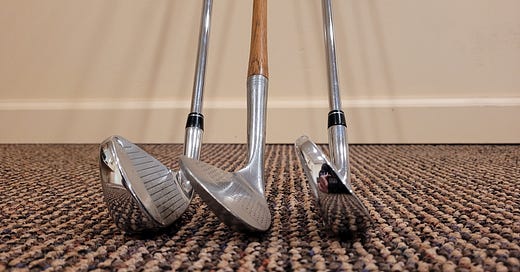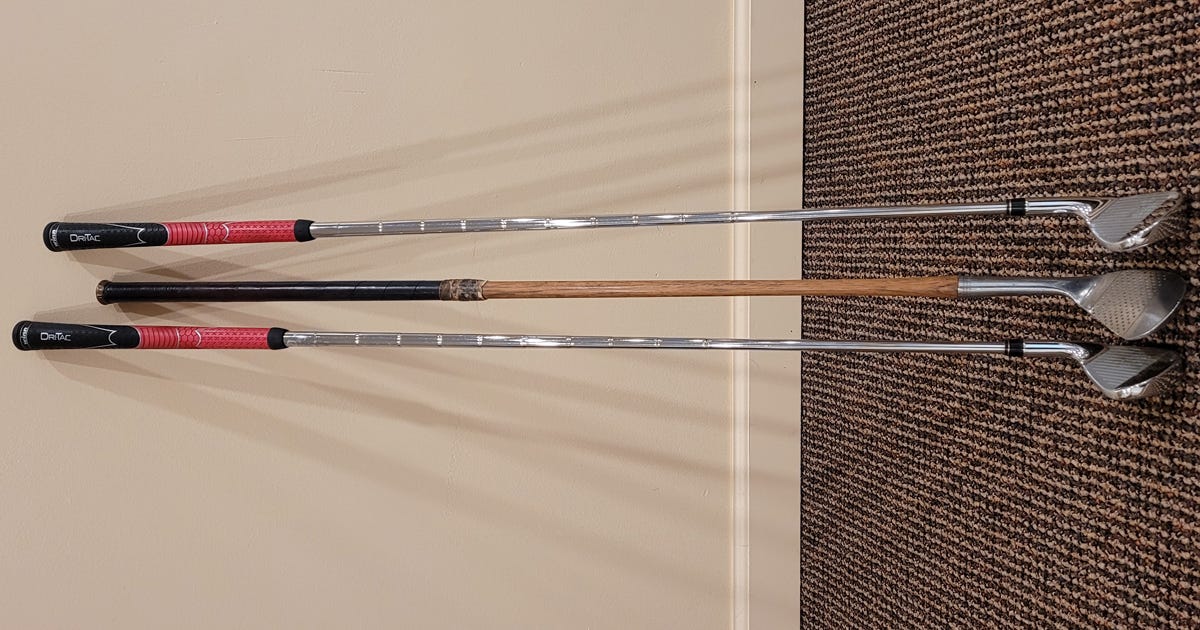Tradition and history are two aspects of golf that make the game such a rich experience. For some, tradition might be spiked shoes and Ben Hogan. For others, it might be hickory shafts and Bobby Jones.
I was looking through some of my golf clubs and pulled out a 1925 hickory shafted Hillerich Bradley 7 iron. Comparing it to my current Callaway Paradigms, I found several surprising differences.
The first thing I noticed was the club’s loft. The club on the left is my 7-iron, and the club on the right is my 9-iron. The hickory shaft 7 iron has almost as much loft as my pitching wedge.
The second thing was the club’s sole, The hickory was about ½ inch in width whereas the Callaway was more than double with a generous bounce making it much more forgiving.
Third, with perimeter weighting theMOI (moment of inertia) (i.e. sweet spot) was much greater on the Callaways. Unless you contact the hickory almost dead center the clubface will twist and you feel the vibration in your hands.
Fourth, look at the length of the shafts. Even the 9 iron is longer than the H&B 7.
Finally, take a look at the grip. Besides being an untapered leather wrap rather than the soft, tacky tapered rubber grip we now have. look at the length of the grip. Players were taught to choke down on the club to creatively produce shorter shots.
One final note, in the era of hickory shafts the flex of the shaft was altered by shaving the shaft reducing its diameter.
Thankfully much of the game we play today has continuity with the game’s history. Some things to change. When is a 7-iron not a 7-iron? When it is a seven iron from a different era.
Each Thursday we’ll bring you a helpful insight.
Swing to the target,
Ed
Have a golf buddy who would enjoy our tips?






